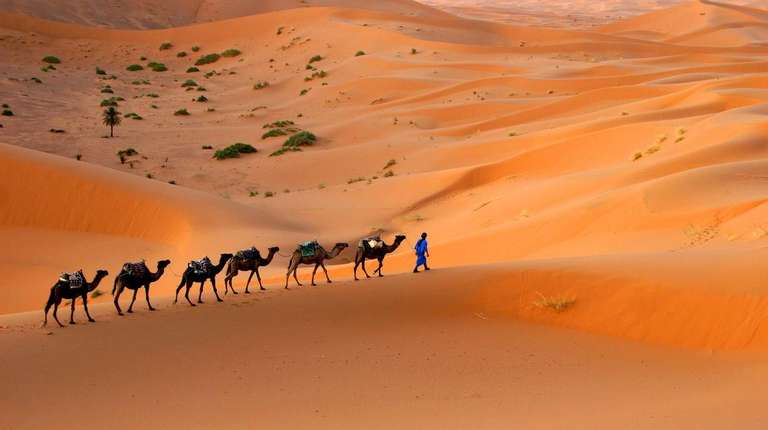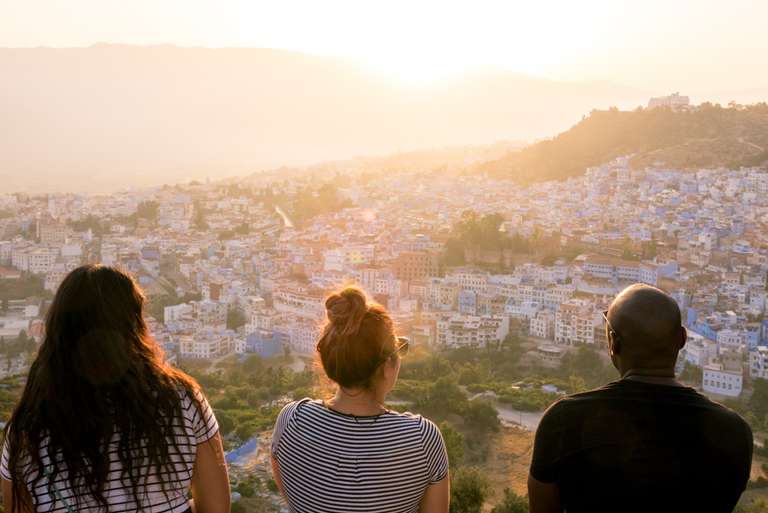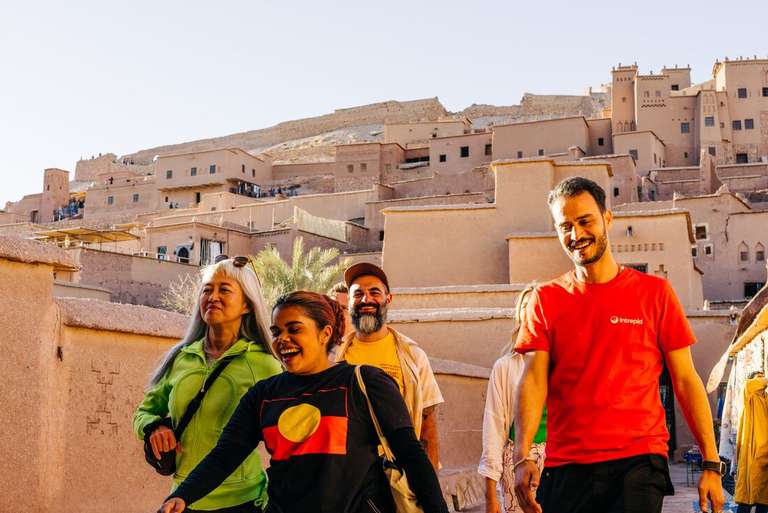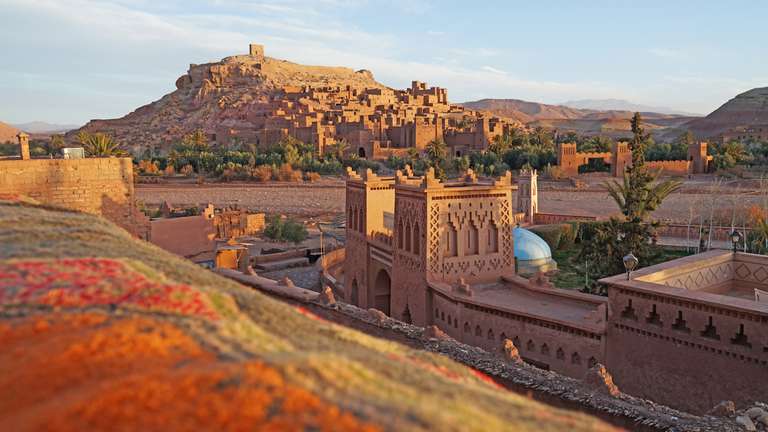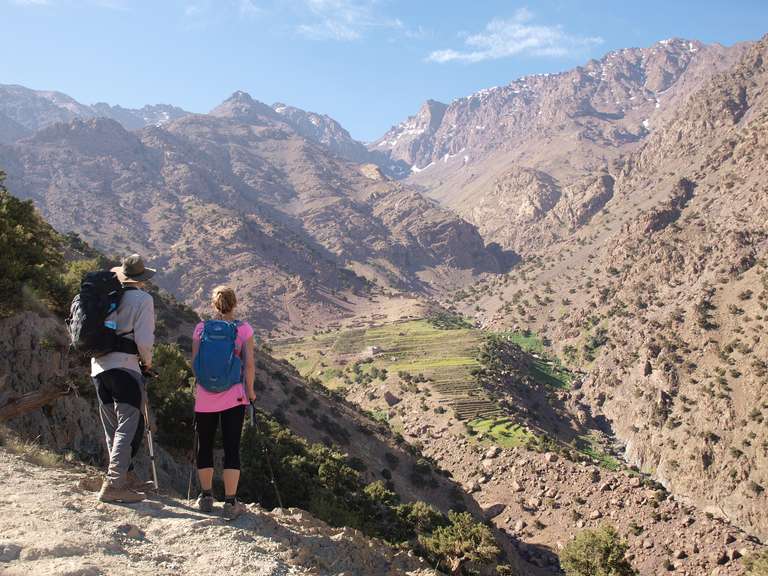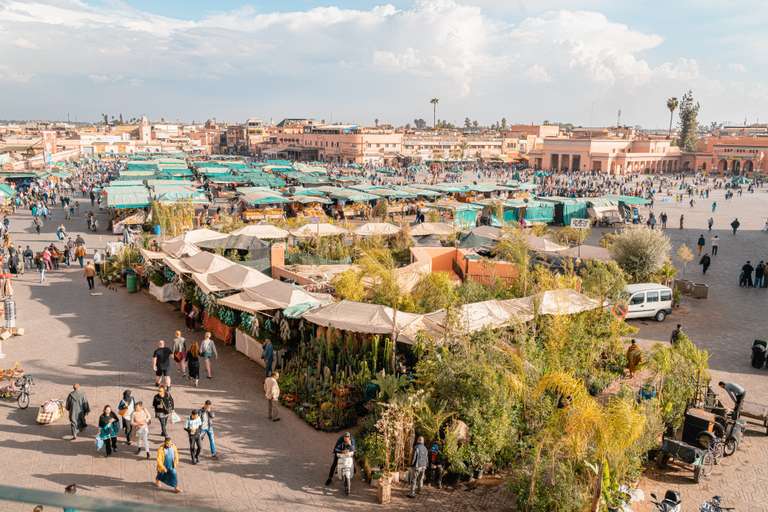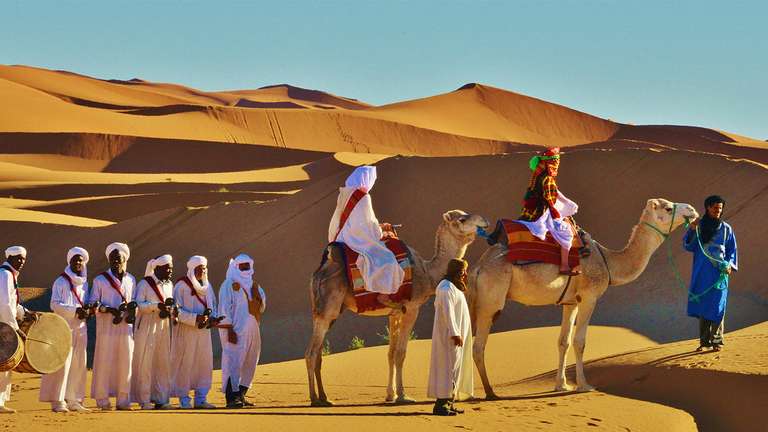Best Time to Visit Morocco
- Excellent
- Good
- Fair
- Poor
- JanAvg Daily: 19 ° CAvg Nightly: 6 ° C
- FebAvg Daily: 21 ° CAvg Nightly: 8 ° C
- MarAvg Daily: 25 ° CAvg Nightly: 11 ° C
- AprAvg Daily: 27 ° CAvg Nightly: 13 ° C
- MayAvg Daily: 29 ° CAvg Nightly: 15 ° C
- JunAvg Daily: 35 ° CAvg Nightly: 19 ° C
- JulAvg Daily: 38 ° CAvg Nightly: 21 ° C
- AugAvg Daily: 38 ° CAvg Nightly: 21 ° C
- SepAvg Daily: 33 ° CAvg Nightly: 19 ° C
- OctAvg Daily: 29 ° CAvg Nightly: 16 ° C
- NovAvg Daily: 23 ° CAvg Nightly: 11 ° C
- DecAvg Daily: 20 ° CAvg Nightly: 8 ° C
- Excellent
- Good
- Fair
- Poor
- Thomas Atkinson
- From England
- Thomas Atkinson
- From England
- Costas Bowgen
- From United Kingdom
- Delaney Durig
- From USA
When is the best time to visit Morocco: Quick Facts
| High Season | Spring (March – May), Winter (December – February) |
| Low Season | Summer (June – August) |
| All seasons | Spring (March – May), Fall (September – November), Winter (December – February), Summer (June – August) |
When to visit Morocco: Seasonal Overview
Wondering what is the best time to visit Morocco? Here’s what each season looks like, as well as the perks of traveling in different seasons:
Spring in Morocco — March to May

Morocco’s spring, which spans from March to May, is an excellent time to visit as the weather is warm and pleasant, ranging from 13°C (55°F) to 27°C (81°F). However, the weather can vary significantly depending on your location. The mountains are cool, the southern and desert areas are comfortable, and the coastal regions are generally warm. As spring unfolds in Morocco, visitors enjoy a unique blend of cultural activities, outdoor adventures and leisure pursuits.
| Average temperatures (annual) | 13°C (55°F) to 27°C (81°F) |
| Average rainfall (annual) | 20 mm – 60 mm |
| Is spring a good time to go to Morocco? |
Yes, with mild temperatures and minimal rain, spring includes the best months to visit Morocco. |
Highlights:
- Enjoy the Sahara Desert's inviting spring temperatures by camping under the stars, going on camel treks, and witnessing stunning sunrises and sunsets over the dunes.
- Experience the Rose Festival in the Valley of Roses in El Kelaa M’Gouna. This enchanting celebration of the annual rose harvest includes music, dance, parades, and a beauty pageant.
- Wander the picturesque blue-hued city of Chefchaouen, where the spring's greenery complements the cerulean city.
- Soak up the sun with some pre-season beach time at Agadir or the wind-surfing capital of Essaouira. Bury your toes in the silky sand, lay back, and relax.
- Venture out for bird watching. Spring is ideal for spotting and identifying local and migrant populations, especially in the Rif Mountains or Merzouga.
- Savor Moroccan mint tea overlooking the Strait of Gibraltar at a rooftop café in Tangier, enjoying the pleasant weather and the panoramic views of the sea and the city.
Travel Tips:
- Spring is a popular time to travel to Morocco, so book in advance, especially for popular destinations such as Marrakech, Chefchaouen, or Fes.
- Pack layered clothing, as the weather in Morocco can differ depending on your location. Bring versatile clothing to adapt comfortably to changing conditions.
- Plan your trip around seasonal happenings, like bird migrations, cultural highlights, and local festivals, to make the most of your time in this gorgeous country.
More Information
Morocco in March
Morocco in April
Morocco in May
Fall in Morocco — September to November

Morocco’s weather experiences a transitional climate in fall, with temperatures gradually cooling down from summer’s heat. Depending on the region, the temperatures typically range from 15°C (59°F) to 30°C (86°F). Rain is minimal at the start and increases as the season progresses. With delightful weather, visitors can comfortably take advantage of many activities, from cultural explorations to outdoor pursuits. 32.5°C (90.5°F) to 22.2°C (72°F)
| Average temperatures (annual) | 15°C (59°F) to 30°C (86°F) |
| Average rainfall (annual) | 30mm – 60 mm |
| Is fall a good time to go to Morocco? | Yes, with cooling temperatures, fall is the best time to travel to Morocco. |
Highlights:
- Enjoy wine tastings, particularly after the fall grape harvest. This season is an excellent time to tour local wineries and taste Moroccan wines, especially those from the Meknes region.
- Surf Taghazout, on the Atlantic coast, renowned for its waves. Fall here offers excellent wave conditions and warm water temperatures for a near-perfect surfing experience.
- Attend cultural events and festivals. When you travel, consider the Erfoud Date Festival or the El Jadida Horse Fair, which showcases local traditions and crafts.
- Wander through the labyrinthine streets of the Medina in Fes, one of the largest walled urban areas in the world. Cooler temperatures allow for a comfortable exploration of this ancient market.
- Experience stargazing, try sandboarding, enjoy camping, embark on 4x4 safaris, or attend desert festivals in the Sahara.
Travel Tips:
- Fall weather is generally mild, but some regions, particularly the north, experience rain. Pack a rain jacket or umbrella for unexpected showers.
- Bring clothes you can layer to adapt to changing weather conditions, especially in the desert or the mountains.
- Make reservations in advance to secure tours and accommodations.
More Information
Morocco in September
Morocco in October
Morocco in November
Winter in Morocco — December to February
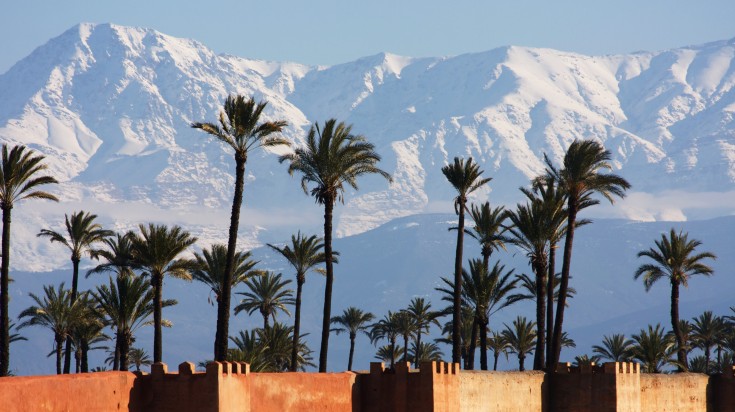
Moroccan winters offer much more tolerable temperatures compared to the intense heat of summer, ranging from 8°C (46°F) in coastal regions to about 29°C (85°F) inland. Mountainous areas can experience temperatures drop below freezing, especially at night. Visitors have an excellent comprehensive range of activities, including skiing and rock climbing.
| Average temperatures (annual) | 8°C (46°F) to 29°C (85.4°F) |
| Average rainfall (annual) | 70mm – 300mm |
| Is winter a good time to go to Morocco? | Yes, with mild weather and fewer tourists, winter is a great time to visit Morocco. |
Highlights:
- Ski or snowboard in the Atlas Mountains in the ski village of Oukaimeden. A truly unique and unexpected experience, given the country's predominantly warm climate.
- Camping in the Sahara Desert provides a different experience than the more popular and warmer seasons. With fewer crowds, this time can offer a more intimate experience.
- Rock climbing in winter is very popular due to the cooler temperatures. The Atlas Mountains and the Todra Gorge are renowned for their routes, attracting climbers of various skill levels.
- Explore ancient cities like Marrakech, Fes, and Meknes, which are less crowded and more comfortable in the winter. These cities are ideal for exploring their historic medinas, palaces, and markets.
Travel Tips:
- Understanding regional weather patterns helps in packing appropriately and planning activities. Consult updated resources or connect with local tourism offices for the most recent and detailed travel guidance advice.
- Winter weather can shift quickly, and rain can be expected, especially in the northern and coastal regions. Be flexible and have backup plans for indoor activities.
More Information
Morocco in December
Morocco in January
Morocco in February
Summer in Morocco — June to August
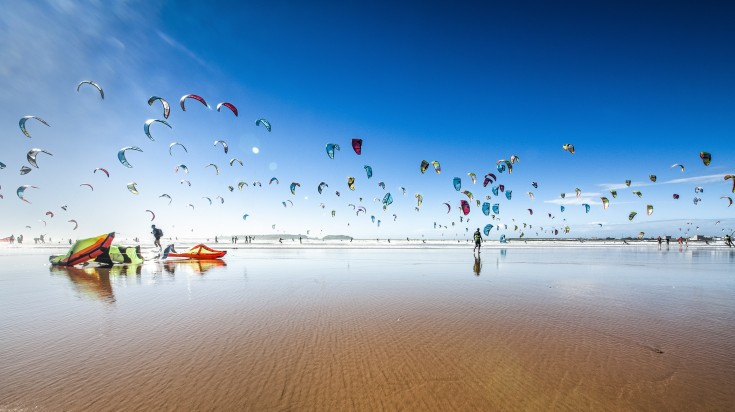
Morocco's summer weather is hot, ranging from 31.3°C (88.3°F) to 36.8°C (98.2°F). In inland cities like Marrakech, the heat can be particularly intense, while coastal cities like Casablanca and Essaouira experience milder temperatures due to the oceanic influence. Ideal activities include coastal exploration, mountain trekking, or early morning or evening excursions.
| Average temperatures (annual) | 31°C (88°F) to 39°C (98°F) |
| Average rainfall (annual) | 30 mm |
| Is summer a good time to go to Morocco? | It's not ideal, but manageable if you don’t mind the heat or your itinerary focuses on coastal and mountain activities. |
Highlights:
- Swim, sunbathe or play volleyball on Atlantic or Mediterranean beaches, or try wind-driven water sports like kiteboarding, especially in Essaouira, known for its consistent trade winds.
- Tour historical sites like the Marrakech Medina, the ancient Roman ruins of Volubilis, and the Kasbah of Ait Benhaddou during the early morning hours to avoid the heat and crowds.
- Enjoy the vibrant night markets and cafes once the sun sets. The Jemaa el-Fnaa in Marrakech becomes even livelier in the evening with snake charmers, street performers and vendors.
- Visit the Atlas Mountains for a refreshing break from the heat. This region also provides breathtaking views and the opportunity to visit remote Berber villages.
- Catch a musical event like the Fes Festival of World Sacred Music or the Gnaoua World Music Festival. Daytime concerts can be hot, but evening shows are cooler.
Travel Tips:
- Be prepared with back-up plans in case it gets too hot. Consider indoor activities like museums, palaces, and mosques, or hit the pool, the beach, or the mountains.
- Wear weather-appropriate clothing to stay cool. Bring a wide-brimmed hat and sunscreen for protection from UV rays.
- Ensure your accommodations have air conditioning.
More Information
Morocco in June
Morocco in July
Morocco in August
Morocco, with four distinct seasons, offers visitors a multitude of optimum travel windows, with spring and fall being the most pleasant. Winter is very doable, especially if you are interested in outdoor activities like skiing, snowboarding, rock climbing, and hiking. Summer is also manageable if you do not mind the heat. For an in-depth exploration of Morocco’s natural beauty and cultural richness, we recommend allocating 10–14-days for your trip.
To learn more on the best season to visit Morocco, read our comprehensive Morocco travel guide for a month-to-month travel insight, things to do and how many days to spend in Morocco. If you’re planning a trip, talk to our travel experts to create your customized trip to Morocco.
Weather in Morocco: Rainfall and Temperatures
| Month | JAN | FEB | MAR | APR | MAY | JUN | JUL | AUG | SEP | OCT | NOV | DEC |
| Avg Daily (°C) | 19 | 21 | 25 | 27 | 29 | 35 | 38 | 38 | 33 | 29 | 23 | 20 |
| Avg Nightly (°C) | 6 | 8 | 11 | 13 | 15 | 19 | 21 | 21 | 19 | 16 | 11 | 8 |
| Avg Daily (°F) | 67 | 70 | 77 | 81 | 85 | 95 | 101 | 101 | 92 | 85 | 74 | 68 |
| Avg Nightly (°F) | 43 | 47 | 52 | 56 | 59 | 67 | 70 | 70 | 67 | 61 | 52 | 47 |
| Avg Rainfall (mm) | 32 | 38 | 38 | 39 | 24 | 5 | 1 | 3 | 6 | 24 | 41 | 13 |


